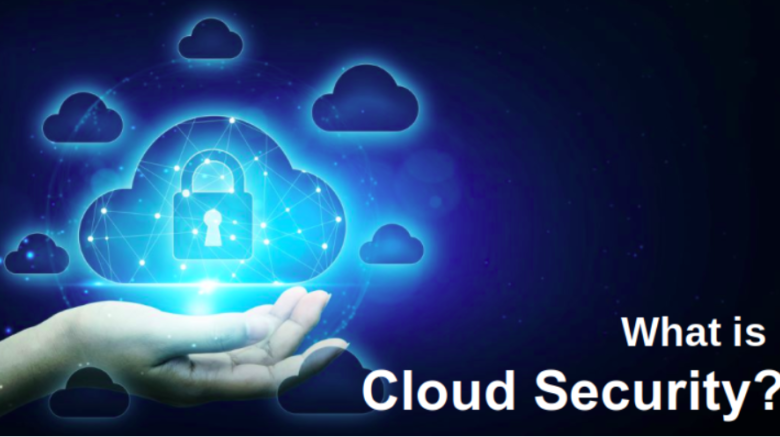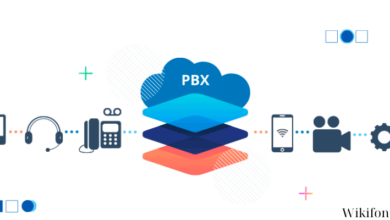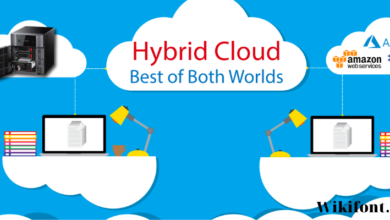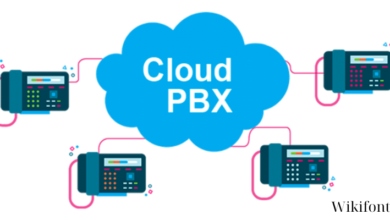Enterprise Cloud Security: Definition, Risks, and 5 Useful Tips For Securing Cloud Infrastructure

Businesses are increasingly relying on cloud services to store and handle their sensitive data as cloud computing services are being adopted more widely. Cost savings, scalability, and accessibility are some advantages of cloud computing, but it also presents a major security challenge. Enterprise cloud security is essential for preventing unauthorized access, data breaches, and other cybersecurity threats from affecting cloud-based data and apps.
The best practices for enterprise cloud security environments are covered in this essay from Wikifont.net, along with a variety of security risks and issues related to cloud computing.
What is Enterprise Cloud Security?
Enterprise cloud security describes the tools, regulations, practices, and controls used by big businesses to safeguard the information technology (IT) systems and data stored on public, private, and distributed clouds.
To cut operating expenses, large businesses frequently switch from on-premises data centers to cloud security architecture. A company’s ability to effectively migrate some or all of their data, applications, and services to the cloud as well as improve their security posture in cloud, hybrid, and multi-cloud environments depends on their enterprise cloud strategy.
Cloud Security Risks
Unauthorized access to sensitive data is one of the biggest security risks connected to enterprise cloud computing. Data is kept and accessed via the internet when using cloud computing, making it susceptible to hacking or other malicious activity. Further increasing the risk of data breaches is the fact that cloud service providers might not always be able to ensure the security of the data kept on their servers.
Data loss or corruption is yet another important security risk connected to business cloud computing. A system malfunction or outage at a cloud service provider could lead to the loss of crucial data, which could have serious financial and reputational repercussions for an organization. Multiple people frequently access cloud-based data, which raises the possibility of accidental data loss or corruption.
Finally, cyberattacks like malware, phishing, and distributed denial of service (DDoS) attacks can compromise corporate cloud security. Attacks of this nature can compromise confidential information, interfere with business operations, and result in significant financial losses for an organization.
Why Is Enterprise Cloud Security Important?
Enterprises require a secure and scalable method to store, manage, and easily obtain massive amounts of data from anywhere as data volume rises. SaaS apps and other cloud-native infrastructure are also being incorporated by businesses into their security architecture. These businesses are using the cloud to support their IT infrastructure and handle their data effectively, affordably, and remotely.
But when companies use corporate cloud services, specific security issues appear. To guarantee that the data of a company is secure, public and private clouds must be configured properly. Otherwise, businesses might inadvertently expose their data to a breach and fall short of essential security or legal requirements.
However, many business executives continue to ponder the significance of online security. If an organization doesn’t have a strong security strategy to support the move to the cloud, IT and security experts should alert leadership to the potential loss of many benefits. If a data breach occurs as a result of a poorly configured cloud environment, businesses will be able to avoid the steep fines and penalties that could follow with the help of a corporate cloud strategy.
Tips For Enterprise Cloud Security
1. Educate users
In terms of cloud computing security, users are the first line of protection. Training sessions on security risks like phishing should be held by cloud security personnel. Phishing was the second most popular attack method in IBM’s Cost of a Data Breach Report 2022, costing businesses $4.65 million.
Train all users on how to recognize phishing emails, malware, and the danger of unsecure practices as a best practice. Consider industry-specific instruction or certification for experienced users, such as administrators.
2. Put Multi-factor Login to use
A username and password have traditionally been used for user verification. Sadly, it’s simple to find the passwords. Users select easy-to-remember passwords or use the same one across multiple websites because passwords can be challenging to recall.
Bad actors are always coming up with new ways to enter networks and compromise accounts. Once an attacker has access to a user’s credentials, they can access sensitive data and cloud-based apps.
By forcing users to enter a code sent to their phone or computer in addition to a password, MFA allaies password concerns. Only authorized users will be able to register in and access vital resources thanks to the use of MFA. MFA, according to Microsoft, thwarts 99.9% of automated hacking efforts.
3. Create more robust passwords
Users are likely to choose easy passwords for numerous accounts if left to their own discretion. The word “password” continues to be the most common and frequently misused password across the majority of sectors, according to research by NordPass.
The length of the password, rather than its complexity, is a key security measure, according to the most recent NIST digital identity recommendations. All passwords created by users need to be at least 8 characters long. The recommendations advise locking users out of password-protected applications if they repeatedly enter the wrong password.
4. Make a backup
It’s never safe to store data. Businesses must take steps to ensure that no data is lost in the event of a security mishap. Security administrators should frequently make backups of sensitive data on widely used backup solutions, including removable media, external hard drives, or backup services.
The company keeps a backup copy of the cloud data in case anything occurs to the original.
5. Implement zero-trust policies
As businesses transition to a hybrid work environment where many workers telecommute and many assets are stored in the cloud, relying on perimeter defenses like VPNs and firewalls becomes less efficient and leaves organizations more vulnerable to data breaches.
The default accessibility of data and resources is ensured by a zero-trust security architecture. It operates under the presumption that every connection and every endpoint pose a danger.
The organization’s security teams, including those responsible for cloud security, must concur on priorities and adhere to the same access policies in order to effectively implement a zero trust architecture.
Final Thought
Enterprise cloud security is critical to ensuring that cloud-based data and applications are protected from unauthorized access, data breaches, and other cybersecurity threats. With the right security measures in place, enterprises can safely and securely store and manage their sensitive data in the cloud. By implementing best practices such as choosing a reputable cloud service provider, implementing access controls, using encryption, regularly monitoring cloud-based activity, implementing disaster recovery and business continuity plans, and training employees on cloud security best practices, enterprises can reduce the risk of cloud-based security incidents and protect their valuable data.
Conclusion: So above is the Enterprise Cloud Security: Definition, Risks, and 5 Useful Tips For Securing Cloud Infrastructure article. Hopefully with this article you can help you in life, always follow and read our good articles on the website: Wikifont.net







